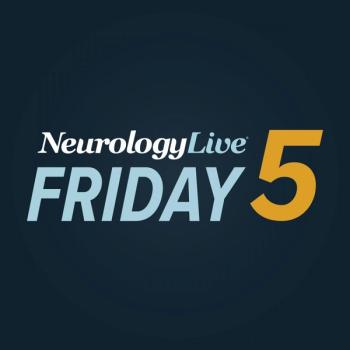
FDA Action Update, June 2025: Approval, Acceptance, Expanded Indication
Key Takeaways
- Avidity Biosciences initiated a Phase 3 study for delpacibart braxlosiran, targeting accelerated approval for FSHD treatment.
- Centessa Pharmaceuticals' ORX142 IND was accepted, advancing to Phase 1 trials for neurological disorders.
Catch up on any of the neurology news headlines you may have missed over the course of June 2025, compiled all into one place by the NeurologyLive® team.
The FDA was busy in June 2025, making a number of decisions on potential new therapeutic agents including granting an approval, accepting a new drug application, and greenlighting an expanded indication.
With all the treatments that have progressed through the pipeline of clinical development, the NeurologyLive® team has been hard at work covering all the agency movements to make sure you are up to date on the latest news in neurology. To give you a chance to catch up on any of the headlines you may have missed over the course of the last month, we’ve compiled all the updates into one place. The coverage includes the latest FDA approvals, new designations, submissions and resubmissions, and clinical trial initiations and holds.
Click the read more buttons for more details and information about each update.
FDA Accelerated Approval Open for FSHD Agent Del-Brax, With Newly Initiated Phase 3 Study to Confirm Efficacy
Early in the month, on June 9, Avidity Biosciences announced the FDA’s openness for an accelerated approval for its investigational agent delpacibart braxlosiran (del-brax) as a potential treatment for facioscapulohumeral muscular dystrophy (FSHD). The company has also initiated its phase 3 FORWARD study, a confirmatory, large-scale trial further testing the agent’s efficacy and safety, that will be used as supportive evidence for a future regulatory submission.1
FORWARD, a placebo-controlled, double-blind study lasting 18 months, is expected to include 200 patients with FSHD, aged 16-70, across 45 sites in the U.S., Canada, Europe, and Japan. Currently, quantitative muscle testing (QMT) is the listed as the study’s primary end point; however, Avidity and the FDA are also aligning on a validated surrogate end point to potentially shorten the time required prior to receiving approval.
"Our regulatory and clinical development progress announced today reflect our continued leadership in rare neuromuscular diseases and bring us a step closer to providing a treatment option to the FSHD community that could meaningfully impact their disease," Sarah Boyce, president and chief executive officer at Avidity, said in a statement.1 "We have confirmed with the FDA that the accelerated approval pathway is open for del-brax. In addition, we have initiated our global confirmatory Phase 3 study intended to support our global approval strategy for del-brax."
Centessa to Advance Orexin Agonist ORX142 to Clinical Trials Following IND Acceptance
About a week later, on June 16, the FDA accepted Centessa Pharmaceuticals’ investigational new drug application (IND) for ORX142, an investigational orexin receptor 2 agonist (OX2R), to be tested in a phase 1 clinical study of healthy volunteers.2
ORX142, which is being studied as a treatment for a select neurological and neurodegenerative disorders, will have its safety, tolerability, and pharmacokinetics evaluated in the phase 1 study. The study, expected to start imminently, with clinical data expected later this year, will test both single-ascending and multiple-ascending doses of the agent in healthy volunteers.
"The clearance of our IND to initiate clinical studies of ORX142 represents a significant milestone, signaling the beginning of an exciting new phase in the clinical development of our OX2R agonist pipeline for indications beyond rare hypersomnias," Saurabh Saha, MD, PhD, chief executive officer at Centessa, said in a statement.2 "With our most advanced OX2R agonist, ORX750, advancing in the Phase 2a CRYSTAL-1 study for the treatment of NT1, NT2 and idiopathic hypersomnia (IH), we are eager to leverage our insights from this new drug class and explore ORX142’s potential to treat a broad range of neurological and neurodegenerative disorders with significant unmet needs."
European Commission Approves Efgartigimod Subcutaneous Injection for Forms of CIDP
A few days later, on June 20, the European Commission (EC) approved efgartigimod alfa (Vyvgart; Argenx) 1000mg for subcutaneous (SC) injection as a monotherapy to treat adult patients with progressive or relapsing active chronic inflammatory demyelinating polyneuropathy (CIDP) following previous treatment with corticosteroids or immunoglobulins.3
The Commission’s approval followed a positive recommendation from the Committee for Medicinal Products for Human Use (CHMP) and was based on positive findings from the phase 3 ADHERE trial (NCT04281472). Results of the study showed that patients treated with efgartigimod alfa SC had a 61% reduction (HR, 0.39; 95% CI, 0.25-0.61) in the risk of relapse compared with placebo, meeting the primary end point. Notably, the safety findings were consistent with the known safety profile of the therapy as observed in previous studies.4
"The EC’s decision has been met with hope and enthusiasm by the European Patient Organisation for Dysimmune and Inflammatory Neuropathies (EPODIN). We see the introduction of a new targeted therapy for CIDP as a major step forward for the patient community," Jean-Philippe Plançon, PhD, MSc, president of EPODIN, said in a statement.3
FDA Greenlights Expanded Indication for Vizamyl in Alzheimer Disease Diagnosis
A couple of days later, June 24, the FDA approved an expanded indication on GE Healthcare’s PET imaging agent Vizamyl to include both quantification of amyloid burden for patients with suspected Alzheimer disease (AD) and use in therapy monitoring. With the expanded indication, neurologists may better assess treatment response to anti-amyloid agents, select patients for disease-modifying therapy, and rely on objective amyloid PET metrics to guide diagnosis and care.5
A radioactive diagnostic agent otherwise known as flutemetamol F18 injection, Vizamyl was originally approved in 2013 as a way to estimate beta-amyloid (Aß) neuritic plaque density in adult patients with cognitive impairment suspected of AD.2 In the latest update, the tracer will now be used in a variety of different clinical settings, including to help determine whether the level of amyloid plaques has been significantly reduced for anti-amyloid therapy to be stopped.
"The use of quantification in amyloid PET imaging has steadily moved from research to clinical practice, where it can aid in more confident and accurate diagnosis,” Phillip Kuo, MD, PhD, FACR, professor of radiology, section chief of Nuclear Medicine and director of Theranostics at City of Hope National Medical Center, said in a statement.5 "Now quantification can also play a critical role in initiating and monitoring amyloid-targeted therapy for Alzheimer disease and determining when it can be discontinued."
Grace Therapeutics Submits NDA for GTX-104 to Treat Aneurysmal Subarachnoid Hemorrhage
A day later, on June 25, Grace Therapeutics announced that it officially submitted a new drug application (NDA) for its investigational agent GTx-104, an injectable formulation of nimodipine, as a potential treatment for patients with aneurysmal subarchnoid hemorrhage (aSAH).6
GTx-104, considered a more convenient treatment, is delivered via intravenous (IV) administration, potentially eliminating the need for nasogastric tube administration in unconscious or dysphagic patients. The agent, which most notably showed promise in a phase 3 study, has potential to lower food effects, drug-to-drug interactions, and eliminate potential dosing errors, according to Grace. In addition, the company believes this therapy may perform better to manage hypotension in patients with aSAH.
"The submission of our NDA for GTx-104 for the treatment of aSAH is a significant milestone for Grace Therapeutics, built on more than a decade of painstaking research and innovation," Prashant Kohli, chief executive officer at Grace, said in a statement.6 "Our NDA is supported by a robust data package including positive results from our STRIVE-ON trial, which provide support for improved clinical outcomes in aSAH patients and both medical and pharmacoeconomic evidence of the potential benefit of GTx-104 in the treatment of aSAH."
REFERENCES
1. Avidity Biosciences Announces the Accelerated Approval Regulatory Pathway in the U.S. is Open for Del-Brax and Initiates the Global, Confirmatory Phase 3 FORWARD™ Study in FSHD. News release. Avidity Biosciences. June 9, 2025. Accessed July 1, 2025. https://www.prnewswire.com/news-releases/avidity-biosciences-announces-the-accelerated-approval-regulatory-pathway-in-the-us-is-open-for-del-brax-and-initiates-the-global-confirmatory-phase-3-forward-study-in-fshd-302476170.html
2. Centessa Pharmaceuticals Announces Clearance of Investigational New Drug Application (IND) for ORX142, a Novel Orexin Receptor 2 (OX2R) Agonist; Clinical Data in Acutely Sleep-Deprived Healthy Volunteers Planned for this Year. News release. June 16, 2025. Accessed July 1, 2025. https://www.globenewswire.com/news-release/2025/06/16/3099897/0/en/Centessa-Pharmaceuticals-Announces-Clearance-of-Investigational-New-Drug-Application-IND-for-ORX142-a-Novel-Orexin-Receptor-2-OX2R-Agonist-Clinical-Data-in-Acutely-Sleep-Deprived-H.html
3. argenx Announces European Commission Approval of VYVGART Subcutaneous Injection for Chronic Inflammatory Demyelinating Polyneuropathy. News Release. Argenx. Published June 20, 2025. Accessed July 1, 2025. https://argenx.com/news/2024/argenx-announces-european-commission-approval-of-vyvgart--efgart
4. Argenx reports positive topline data from ADHERE study of Vyvgart Hytrulo in patients with chronic inflammatory demyelinating polyneuropathy. News release. Argenx. July 17, 2023. Accessed July 1, 2025. https://www.globenewswire.com/news-release/2023/07/17/2705309/0/en/argenx-Reports-Positive-Topline-Data-from-ADHERE-Study-of-VYVGART-Hytrulo-in-Patients-with-Chronic-Inflammatory-Demyelinating-Polyneuropathy.html
5. FDA approves expanded indications for GE HealthCare’s Vizamyl PET imaging agent for beta amyloid detection, enabling more precise care for Alzheimer’s patients. News release. GE Healthcare. June 24, 2025. Accessed July 1, 2025. https://www.gehealthcare.com/about/newsroom/press-releases/fda-approves-expanded-indications-for-ge-healthcares-vizamyl-pet-imaging-agent-for-beta-amyloid-detection-enabling-more-precise-care-for-alzheimers-patients
6. Grace Therapeutics Announces Submission of New Drug Application to U.S. Food and Drug Administration for GTx-104. News release. June 25, 2025. Accessed July 1, 2025. https://www.globenewswire.com/news-release/2025/06/25/3105015/0/en/Grace-Therapeutics-Announces-Submission-of-New-Drug-Application-to-U-S-Food-and-Drug-Administration-for-GTx-104.html
Newsletter
Keep your finger on the pulse of neurology—subscribe to NeurologyLive for expert interviews, new data, and breakthrough treatment updates.



































